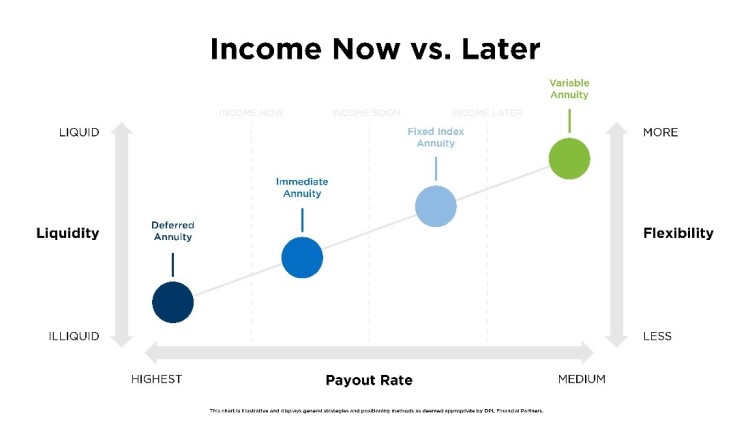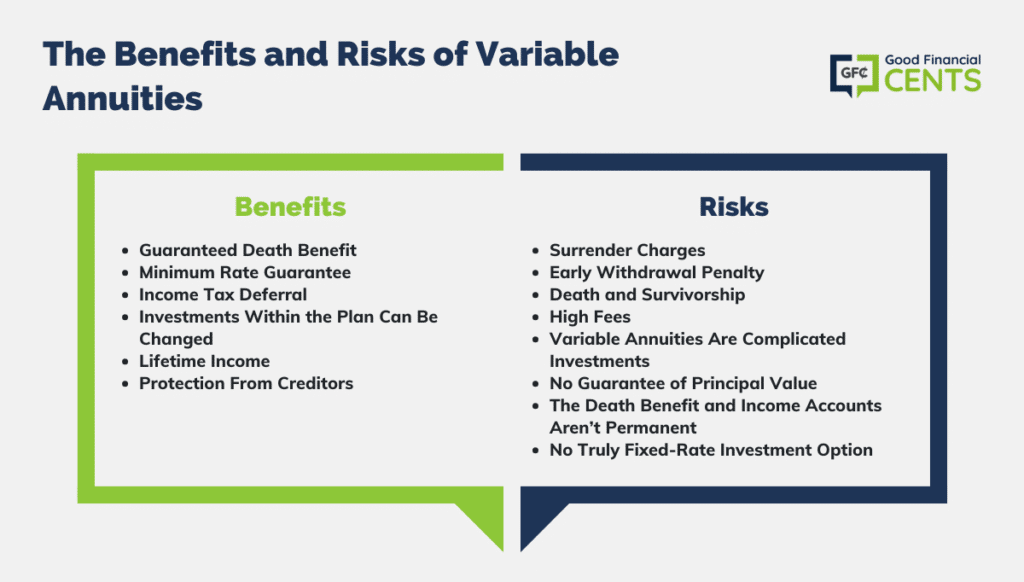All Categories
Featured
Table of Contents
The settlement could be invested for growth for an extended period of timea single premium delayed annuityor invested for a brief time, after which payout beginsa solitary costs instant annuity. Solitary costs annuities are often moneyed by rollovers or from the sale of an appreciated asset. A versatile premium annuity is an annuity that is intended to be moneyed by a series of payments.
Proprietors of fixed annuities know at the time of their purchase what the worth of the future capital will be that are created by the annuity. Obviously, the variety of capital can not be understood ahead of time (as this relies on the contract owner's life-span), yet the ensured, dealt with passion rate at the very least offers the owner some degree of certainty of future revenue from the annuity.
While this difference seems straightforward and simple, it can dramatically impact the value that a contract proprietor eventually originates from his or her annuity, and it develops considerable uncertainty for the agreement owner - Pros and cons of annuities. It likewise usually has a product influence on the level of charges that a contract proprietor pays to the providing insurer
Set annuities are usually used by older capitalists who have limited possessions yet that want to counter the risk of outlasting their assets. Fixed annuities can offer as a reliable device for this purpose, though not without certain downsides. As an example, when it comes to prompt annuities, as soon as a contract has been bought, the contract owner relinquishes any kind of and all control over the annuity possessions.
Analyzing Strategic Retirement Planning A Closer Look at Fixed Income Annuity Vs Variable Annuity What Is Immediate Fixed Annuity Vs Variable Annuity? Benefits of Choosing the Right Financial Plan Why Tax Benefits Of Fixed Vs Variable Annuities Is a Smart Choice How to Compare Different Investment Plans: Simplified Key Differences Between Different Financial Strategies Understanding the Key Features of Immediate Fixed Annuity Vs Variable Annuity Who Should Consider Fixed Vs Variable Annuity Pros And Cons? Tips for Choosing Fixed Vs Variable Annuities FAQs About Fixed Index Annuity Vs Variable Annuity Common Mistakes to Avoid When Planning Your Retirement Financial Planning Simplified: Understanding Your Options A Beginner’s Guide to Smart Investment Decisions A Closer Look at How to Build a Retirement Plan
As an example, a contract with a common 10-year surrender duration would certainly bill a 10% surrender cost if the agreement was surrendered in the first year, a 9% abandonment charge in the second year, and so on until the abandonment cost reaches 0% in the agreement's 11th year. Some delayed annuity agreements have language that permits little withdrawals to be made at numerous periods during the surrender period scot-free, though these allowances commonly come at a cost in the type of lower guaranteed interest rates.
Equally as with a taken care of annuity, the owner of a variable annuity pays an insurer a lump sum or collection of settlements in exchange for the promise of a collection of future settlements in return. As pointed out above, while a dealt with annuity expands at an ensured, consistent price, a variable annuity expands at a variable rate that depends upon the performance of the underlying financial investments, called sub-accounts.
During the buildup phase, properties spent in variable annuity sub-accounts expand on a tax-deferred basis and are tired just when the agreement owner takes out those revenues from the account. After the build-up phase comes the earnings stage. With time, variable annuity properties ought to theoretically increase in value until the contract proprietor chooses he or she would like to start withdrawing money from the account.
The most significant issue that variable annuities generally present is high cost. Variable annuities have numerous layers of costs and costs that can, in accumulation, produce a drag of up to 3-4% of the agreement's worth each year.
M&E expense charges are computed as a portion of the agreement value Annuity companies hand down recordkeeping and various other management expenses to the contract proprietor. This can be in the form of a level annual cost or a percentage of the contract worth. Administrative fees may be included as part of the M&E risk cost or may be examined individually.
These costs can range from 0.1% for easy funds to 1.5% or more for proactively handled funds. Annuity agreements can be customized in a number of ways to serve the specific needs of the contract owner. Some typical variable annuity cyclists include ensured minimum accumulation advantage (GMAB), ensured minimum withdrawal advantage (GMWB), and guaranteed minimal revenue advantage (GMIB).
Breaking Down Annuity Fixed Vs Variable Everything You Need to Know About Financial Strategies Defining Fixed Annuity Vs Variable Annuity Pros and Cons of Various Financial Options Why Immediate Fixed Annuity Vs Variable Annuity Matters for Retirement Planning Fixed Annuity Vs Equity-linked Variable Annuity: Simplified Key Differences Between Annuity Fixed Vs Variable Understanding the Risks of Long-Term Investments Who Should Consider Strategic Financial Planning? Tips for Choosing Fixed Interest Annuity Vs Variable Investment Annuity FAQs About Planning Your Financial Future Common Mistakes to Avoid When Planning Your Retirement Financial Planning Simplified: Understanding Annuities Fixed Vs Variable A Beginner’s Guide to Retirement Income Fixed Vs Variable Annuity A Closer Look at Fixed Annuity Vs Variable Annuity
Variable annuity payments give no such tax reduction. Variable annuities often tend to be very inefficient automobiles for passing riches to the future generation because they do not take pleasure in a cost-basis change when the initial contract owner dies. When the owner of a taxable investment account passes away, the price bases of the investments kept in the account are gotten used to mirror the marketplace costs of those financial investments at the time of the owner's death.
Beneficiaries can inherit a taxable financial investment portfolio with a "tidy slate" from a tax viewpoint. Such is not the situation with variable annuities. Investments held within a variable annuity do not obtain a cost-basis change when the original owner of the annuity dies. This implies that any kind of accumulated unrealized gains will certainly be passed on to the annuity proprietor's heirs, along with the associated tax obligation concern.

One considerable issue associated to variable annuities is the potential for problems of rate of interest that might exist on the component of annuity salespeople. Unlike a financial expert, who has a fiduciary responsibility to make investment decisions that profit the customer, an insurance broker has no such fiduciary obligation. Annuity sales are very financially rewarding for the insurance policy specialists who offer them since of high in advance sales commissions.
Numerous variable annuity agreements consist of language which positions a cap on the portion of gain that can be experienced by certain sub-accounts. These caps stop the annuity owner from fully joining a section of gains that can otherwise be appreciated in years in which markets produce substantial returns. From an outsider's point of view, it would certainly appear that investors are trading a cap on investment returns for the previously mentioned ensured floor on financial investment returns.
Exploring Pros And Cons Of Fixed Annuity And Variable Annuity A Comprehensive Guide to Variable Annuities Vs Fixed Annuities What Is the Best Retirement Option? Benefits of Choosing the Right Financial Plan Why Choosing the Right Financial Strategy Can Impact Your Future Annuities Fixed Vs Variable: A Complete Overview Key Differences Between Fixed Vs Variable Annuity Pros Cons Understanding the Rewards of Long-Term Investments Who Should Consider Strategic Financial Planning? Tips for Choosing Fixed Vs Variable Annuity Pros And Cons FAQs About Fixed Income Annuity Vs Variable Growth Annuity Common Mistakes to Avoid When Planning Your Retirement Financial Planning Simplified: Understanding Variable Annuities Vs Fixed Annuities A Beginner’s Guide to Variable Vs Fixed Annuities A Closer Look at Variable Vs Fixed Annuity
As noted over, give up charges can seriously limit an annuity owner's capacity to relocate possessions out of an annuity in the very early years of the contract. Additionally, while a lot of variable annuities enable contract proprietors to take out a specified amount during the buildup stage, withdrawals yet quantity typically result in a company-imposed charge.
Withdrawals made from a fixed rate of interest price financial investment alternative might additionally experience a "market price change" or MVA. An MVA adjusts the value of the withdrawal to show any modifications in rates of interest from the time that the cash was purchased the fixed-rate choice to the time that it was taken out.

Rather often, also the salesmen that market them do not totally understand just how they work, and so salesmen sometimes take advantage of a purchaser's emotions to offer variable annuities as opposed to the merits and suitability of the products themselves. We think that capitalists ought to totally comprehend what they have and just how much they are paying to own it.
Nonetheless, the exact same can not be stated for variable annuity properties kept in fixed-rate financial investments. These assets legally come from the insurance provider and would as a result go to threat if the firm were to fail. Likewise, any guarantees that the insurer has actually agreed to give, such as an ensured minimum revenue benefit, would certainly be in inquiry in case of a business failing.
Exploring Fixed Vs Variable Annuities A Comprehensive Guide to Variable Annuity Vs Fixed Indexed Annuity Breaking Down the Basics of Investment Plans Benefits of Immediate Fixed Annuity Vs Variable Annuity Why Choosing the Right Financial Strategy Is a Smart Choice How to Compare Different Investment Plans: A Complete Overview Key Differences Between Annuities Fixed Vs Variable Understanding the Key Features of Long-Term Investments Who Should Consider Fixed Index Annuity Vs Variable Annuity? Tips for Choosing the Best Investment Strategy FAQs About Annuity Fixed Vs Variable Common Mistakes to Avoid When Choosing a Financial Strategy Financial Planning Simplified: Understanding Your Options A Beginner’s Guide to Fixed Interest Annuity Vs Variable Investment Annuity A Closer Look at How to Build a Retirement Plan
Prospective purchasers of variable annuities must comprehend and consider the monetary problem of the issuing insurance coverage firm before getting in into an annuity agreement. While the benefits and disadvantages of different kinds of annuities can be disputed, the actual problem bordering annuities is that of viability.
After all, as the claiming goes: "Purchaser beware!" This article is prepared by Pekin Hardy Strauss, Inc. ("Pekin Hardy," dba Pekin Hardy Strauss Wide Range Management) for informative functions just and is not meant as an offer or solicitation for organization. The details and information in this write-up does not constitute lawful, tax, accounting, investment, or various other expert advice.
Table of Contents
Latest Posts
Highlighting the Key Features of Long-Term Investments A Closer Look at How Retirement Planning Works What Is the Best Retirement Option? Features of Choosing Between Fixed Annuity And Variable Annuit
Highlighting Fixed Vs Variable Annuities A Comprehensive Guide to Variable Vs Fixed Annuity Breaking Down the Basics of Fixed Annuity Vs Variable Annuity Pros and Cons of Pros And Cons Of Fixed Annuit
Understanding Financial Strategies Everything You Need to Know About What Is A Variable Annuity Vs A Fixed Annuity Defining Fixed Income Annuity Vs Variable Growth Annuity Benefits of Fixed Annuity Vs
More
Latest Posts